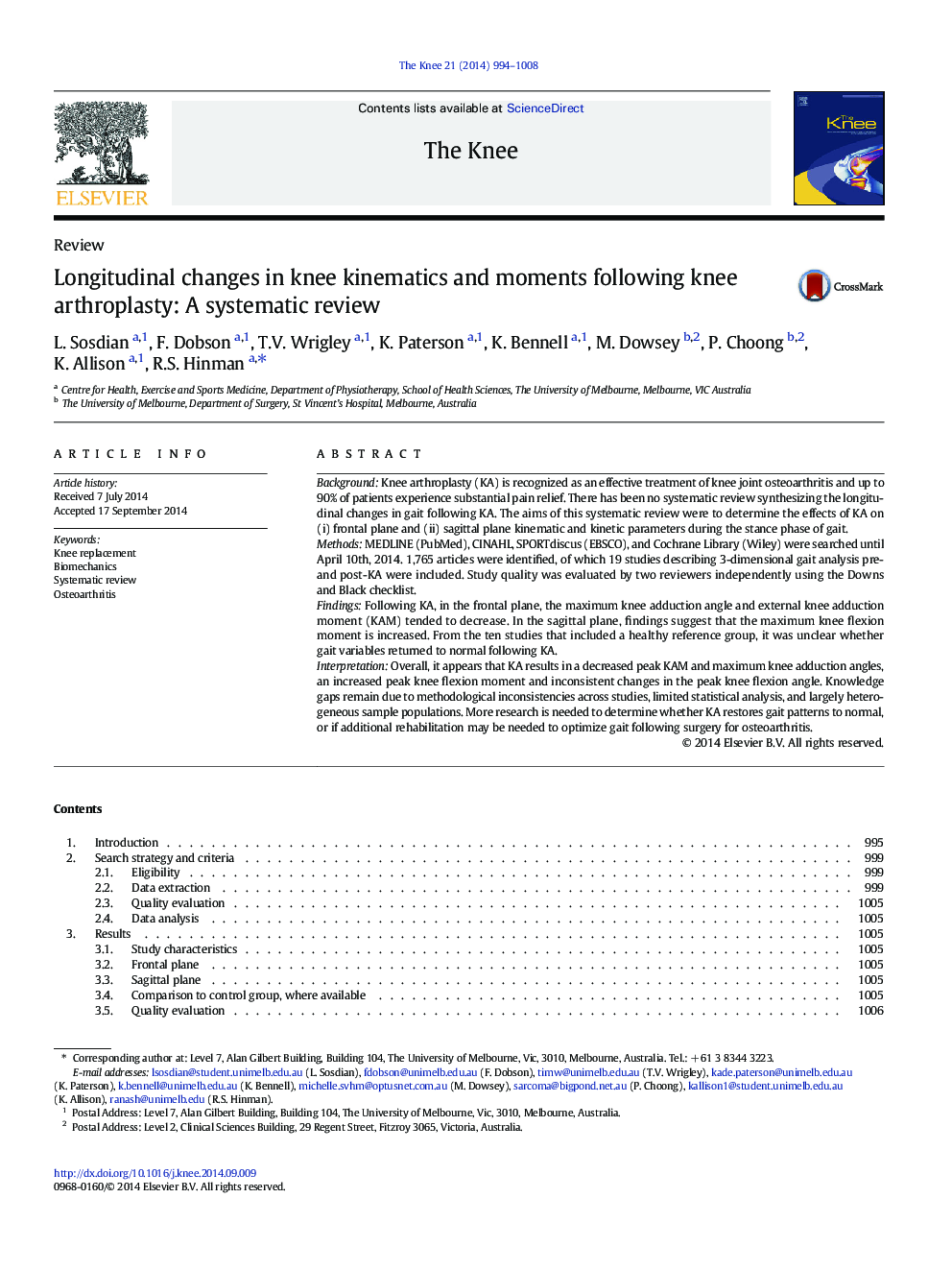| کد مقاله | کد نشریه | سال انتشار | مقاله انگلیسی | نسخه تمام متن |
|---|---|---|---|---|
| 6211309 | 1267213 | 2014 | 15 صفحه PDF | دانلود رایگان |
- We systematically reviewed longitudinal changes following knee arthroplasty
- 19 articles describing three-dimensional gait analysis were included
- Maximum knee adduction angle and external knee adduction moment decreased
- In the sagittal plane, the peak knee flexion moment increased
- Further research is needed to determine if arthroplasty restores gait patterns to normal
BackgroundKnee arthroplasty (KA) is recognized as an effective treatment of knee joint osteoarthritis and up to 90% of patients experience substantial pain relief. There has been no systematic review synthesizing the longitudinal changes in gait following KA. The aims of this systematic review were to determine the effects of KA on (i) frontal plane and (ii) sagittal plane kinematic and kinetic parameters during the stance phase of gait.MethodsMEDLINE (PubMed), CINAHL, SPORTdiscus (EBSCO), and Cochrane Library (Wiley) were searched until April 10th, 2014. 1,765 articles were identified, of which 19 studies describing 3-dimensional gait analysis pre- and post-KA were included. Study quality was evaluated by two reviewers independently using the Downs and Black checklist.FindingsFollowing KA, in the frontal plane, the maximum knee adduction angle and external knee adduction moment (KAM) tended to decrease. In the sagittal plane, findings suggest that the maximum knee flexion moment is increased. From the ten studies that included a healthy reference group, it was unclear whether gait variables returned to normal following KA.InterpretationOverall, it appears that KA results in a decreased peak KAM and maximum knee adduction angles, an increased peak knee flexion moment and inconsistent changes in the peak knee flexion angle. Knowledge gaps remain due to methodological inconsistencies across studies, limited statistical analysis, and largely heterogeneous sample populations. More research is needed to determine whether KA restores gait patterns to normal, or if additional rehabilitation may be needed to optimize gait following surgery for osteoarthritis.
Journal: The Knee - Volume 21, Issue 6, December 2014, Pages 994-1008
